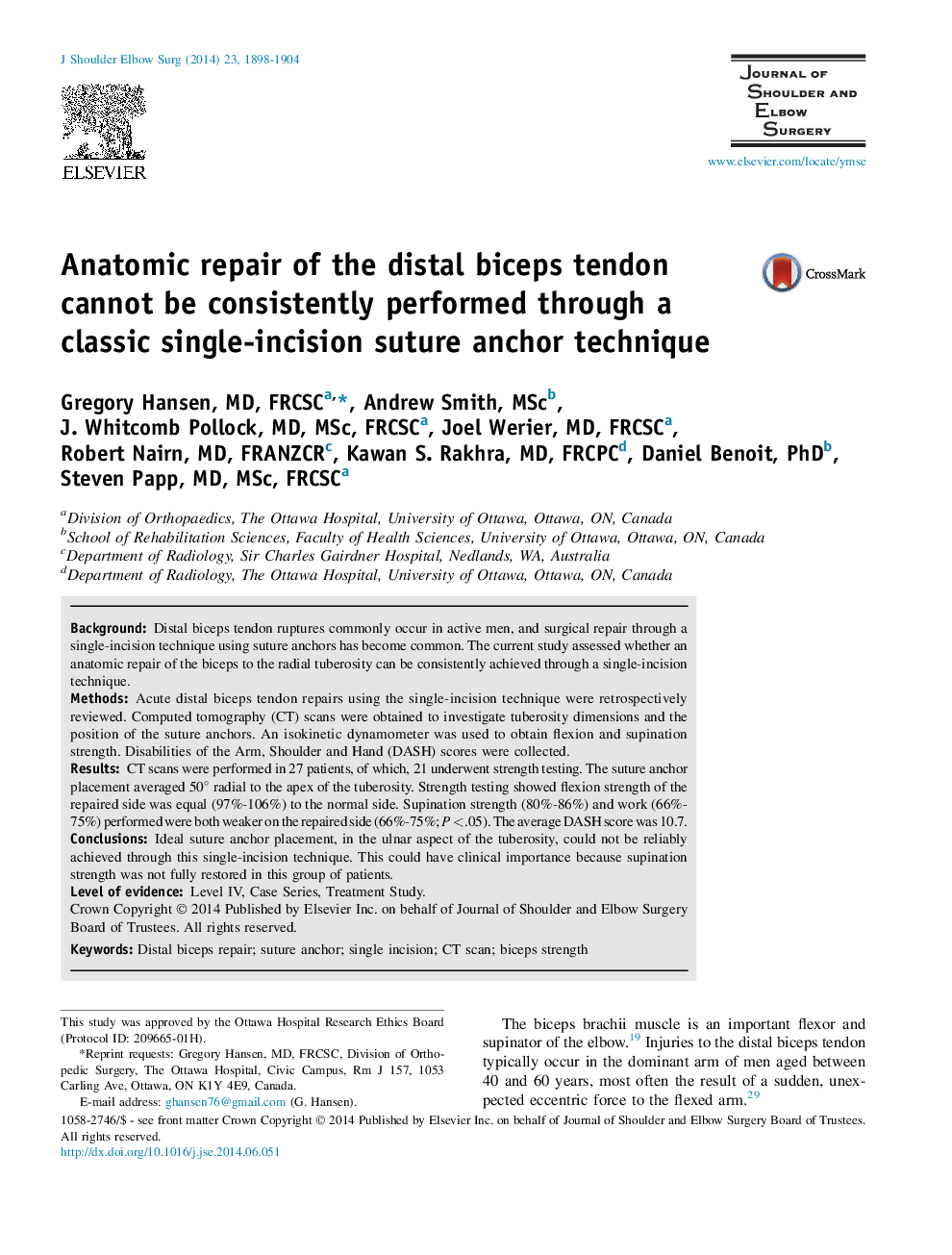| Article ID | Journal | Published Year | Pages | File Type |
|---|---|---|---|---|
| 4073434 | Journal of Shoulder and Elbow Surgery | 2014 | 7 Pages |
BackgroundDistal biceps tendon ruptures commonly occur in active men, and surgical repair through a single-incision technique using suture anchors has become common. The current study assessed whether an anatomic repair of the biceps to the radial tuberosity can be consistently achieved through a single-incision technique.MethodsAcute distal biceps tendon repairs using the single-incision technique were retrospectively reviewed. Computed tomography (CT) scans were obtained to investigate tuberosity dimensions and the position of the suture anchors. An isokinetic dynamometer was used to obtain flexion and supination strength. Disabilities of the Arm, Shoulder and Hand (DASH) scores were collected.ResultsCT scans were performed in 27 patients, of which, 21 underwent strength testing. The suture anchor placement averaged 50° radial to the apex of the tuberosity. Strength testing showed flexion strength of the repaired side was equal (97%-106%) to the normal side. Supination strength (80%-86%) and work (66%-75%) performed were both weaker on the repaired side (66%-75%; P < .05). The average DASH score was 10.7.ConclusionsIdeal suture anchor placement, in the ulnar aspect of the tuberosity, could not be reliably achieved through this single-incision technique. This could have clinical importance because supination strength was not fully restored in this group of patients.
